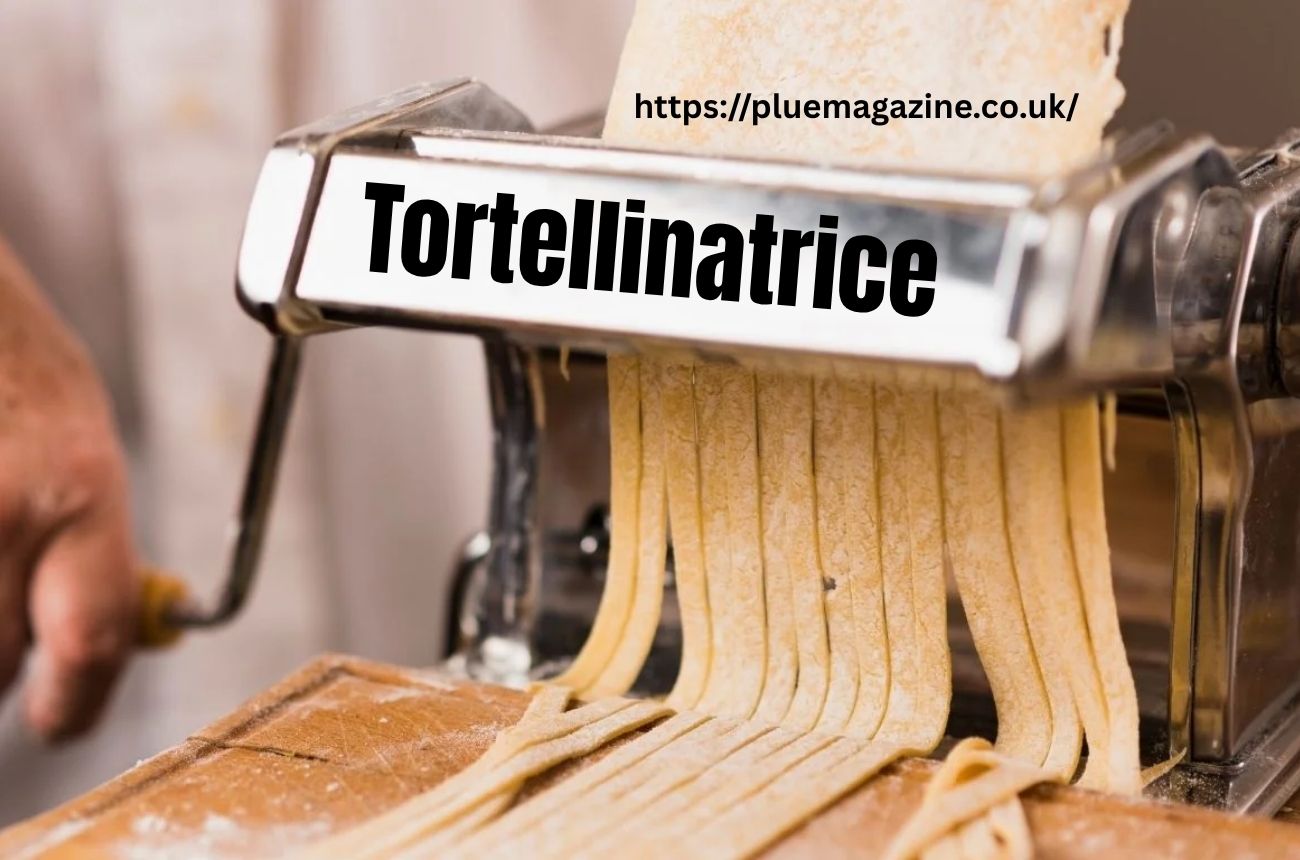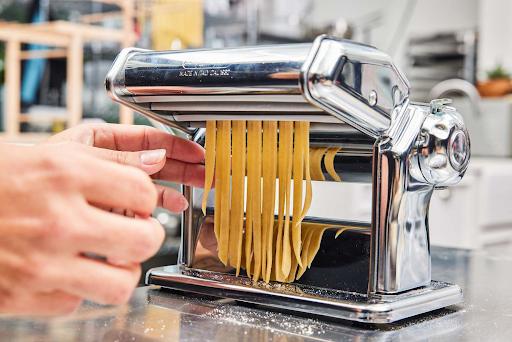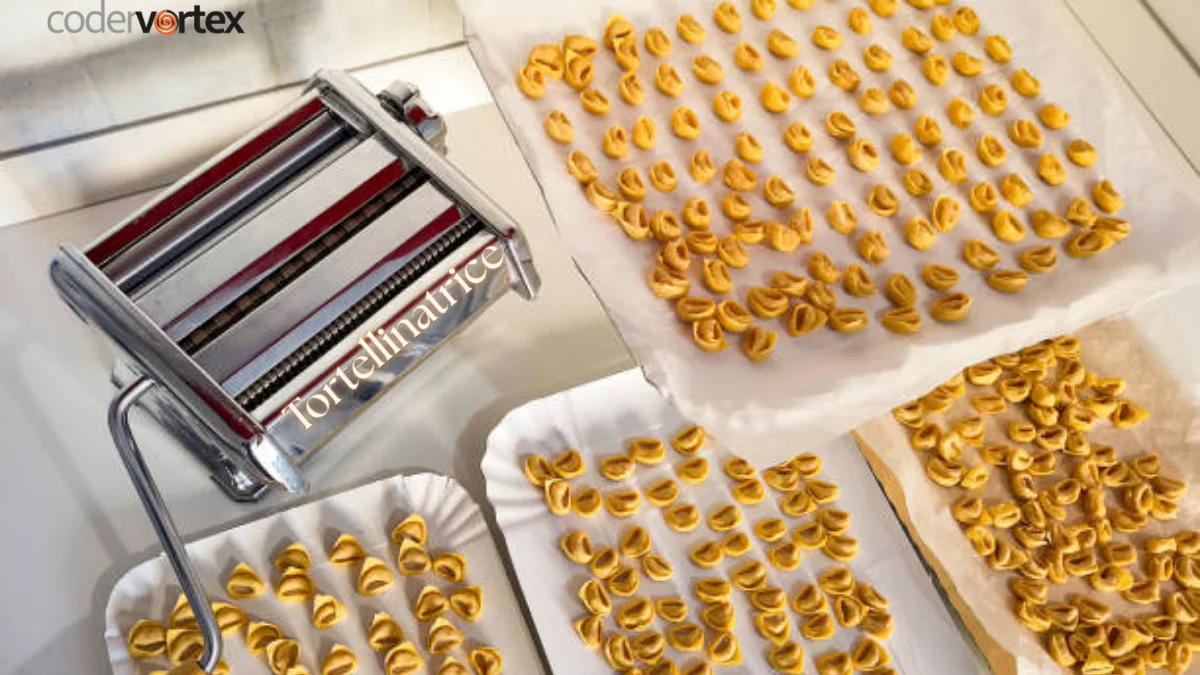Guide
Tortellinatrice: The Ultimate Pasta Machine for Perfect Tortellini

Italian cuisine has long been admired for its mastery of fresh pasta, and at the heart of that tradition lies the art of making tortellini — delicate, ring-shaped pasta filled with rich ingredients. While handmade tortellini remain a symbol of culinary craftsmanship, modern technology has introduced an innovation that merges tradition with precision — the Tortellinatrice. This intelligent pasta-making machine has become a staple in professional kitchens and artisanal pasta shops, allowing chefs and home cooks alike to achieve perfection in every fold.
The Origin and Meaning of Tortellinatrice
The term Tortellinatrice originates from the Italian word tortellini (referring to the small stuffed pasta) combined with the suffix -trice, meaning a female agent or machine that performs a function. Thus, “Tortellinatrice” literally translates to “the tortellini maker.” First conceptualized in the Emilia-Romagna region — the birthplace of tortellini — these machines were initially developed in the mid-20th century to assist in mass pasta production while preserving artisanal quality.
How the Tortellinatrice Works
A Tortellinatrice machine simplifies the complex, multi-step process of crafting tortellini. It rolls out thin sheets of pasta dough, accurately doses the filling, and folds each piece into its signature ring shape. Using adjustable molds and programmable settings, it ensures uniform size, weight, and sealing precision. In advanced models, sensors monitor humidity and dough consistency, ensuring that each tortellino maintains the right elasticity — a key factor in preventing breakage during cooking.
Evolution of the Modern Tortellinatrice
The early Tortellinatrice was a mechanical device requiring constant supervision and manual feeding of dough. Today’s versions integrate AI-assisted calibration, stainless-steel engineering, and food-safe automation. Some commercial Tortellinatrice machines can produce thousands of tortellini per hour while maintaining perfect shape symmetry and filling balance. The evolution of these machines reflects Italy’s broader commitment to merging craftsmanship with innovation.
Why the Tortellinatrice Matters in Modern Cuisine
As global demand for authentic Italian food grows, consistency and efficiency have become crucial. The Tortellinatrice ensures not only speed but also uniformity, helping restaurants and food producers meet high-volume orders without compromising on quality. For home chefs, compact models bring the joy of professional-grade pasta making to the domestic kitchen. This democratization of culinary tools mirrors a broader cultural shift toward homemade, high-quality meals with authentic roots.
Types of Tortellinatrice Machines

There are three main categories of Tortellinatrice machines:
-
Manual Tortellinatrice – Ideal for small-scale artisans or enthusiasts. It requires some hand control but preserves the tactile feel of traditional pasta making.
-
Semi-Automatic Models – Common in small restaurants and boutique pasta shops; these balance automation with control, allowing for recipe customization.
-
Industrial Tortellinatrice – Designed for large-scale manufacturers, these machines feature conveyor systems, precise filling dosers, and temperature regulation to maintain optimal dough quality.
Each type serves a different culinary environment, showing how versatile and adaptive the Tortellinatrice has become over time.
Materials and Build Quality
Modern Tortellinatrice units are made from AISI 304 or 316 stainless steel, known for its resistance to corrosion and ease of cleaning — vital for food safety compliance. The internal components, including rollers and cutters, are precision-engineered for long-term durability. Some advanced models incorporate Teflon-coated rollers to prevent dough sticking, reducing waste and ensuring smoother production cycles.
Newly Discovered Innovations in Tortellinatrice Design

Recent research in food technology has introduced smart modifications in Tortellinatrice design. A notable advancement is the smart torque balancing system, which detects dough stiffness in real time and automatically adjusts roller pressure. Another innovation is the dual-chamber filling injector, capable of producing two-flavored tortellini — for instance, ricotta-spinach or cheese-mushroom combinations — within a single production run. Additionally, new eco-friendly motors have reduced energy consumption by up to 25%, marking a sustainable leap in pasta production.
Benefits of Using a Tortellinatrice
The advantages of using a Tortellinatrice extend beyond efficiency. It helps preserve culinary heritage by standardizing the artisanal process. For chefs, it saves time while ensuring consistent results. The precise dosing prevents ingredient waste, while the ergonomic design reduces strain for operators. In essence, the Tortellinatrice offers a fusion of tradition, efficiency, and sustainability, aligning perfectly with the modern food industry’s demands.
Maintenance and Care Tips
Like any high-precision equipment, proper maintenance is crucial for extending the machine’s lifespan. Users are advised to:
-
Clean the rollers and molds after each use with mild detergent.
-
Lubricate moving parts using food-grade lubricants.
-
Avoid excessive humidity exposure.
-
Conduct monthly calibration to ensure consistent dough thickness.
Manufacturers now provide self-cleaning modules and AI diagnostics that alert users about required maintenance intervals — a convenience unimaginable a decade ago.
Choosing the Right Tortellinatrice

Selecting a suitable Tortellinatrice depends on your production scale and culinary goals. A home cook might prefer a compact tabletop unit, while a restaurant or pasta factory benefits from a high-capacity industrial version. Key factors to consider include:
-
Production capacity (per hour)
-
Filling types supported
-
Power consumption
-
Maintenance requirements
-
Warranty and after-sales service
Before purchasing, experts recommend testing different machines with your preferred dough recipes to evaluate performance accuracy.
Global Market and Export Influence
Italian manufacturers dominate the global Tortellinatrice market, exporting primarily to the United States, Japan, and France. However, emerging producers from Germany and South Korea have introduced modular designs suitable for multi-pasta formats, increasing competition. As of 2025, demand for smart kitchen automation tools, including Tortellinatrice units, is projected to grow by 15% annually — signaling a new golden age for pasta innovation worldwide.
Conclusion
The Tortellinatrice is more than a kitchen appliance — it represents Italy’s spirit of innovation, craftsmanship, and cultural preservation. By merging ancient recipes with cutting-edge automation, it bridges generations of culinary tradition. Whether in a bustling restaurant or a home kitchen, this machine allows everyone to savor the timeless delight of perfectly shaped tortellini — a true symbol of culinary harmony between human creativity and technological excellence.
Frequently Asked Questions (FAQs)
1. What makes the Tortellinatrice different from other pasta machines?
Unlike traditional pasta rollers, the Tortellinatrice specializes in shaping and filling tortellini automatically. It doesn’t just roll dough — it measures, fills, and seals each piece with mathematical precision, replicating handmade quality while saving time and labor.
2. Can a Tortellinatrice be used at home?
Yes. Compact versions designed for domestic use are available. These home models offer simplified controls but deliver the same precision as commercial units, allowing culinary enthusiasts to enjoy authentic tortellini without the complexity of industrial machinery.
3. How has technology improved the Tortellinatrice in recent years?
Recent innovations include AI-driven sensors, smart torque systems, and self-cleaning functions. Some models now connect via Wi-Fi, allowing users to adjust settings or monitor production through mobile applications — a major step forward for modern kitchens.
4. What maintenance routine ensures a Tortellinatrice’s longevity?
Regular cleaning after each use, monthly roller calibration, and occasional lubrication with food-grade oil are key. Many modern machines come with digital alerts for part replacement or mechanical adjustment, preventing major malfunctions.
5. Is the Tortellinatrice environmentally friendly?
Yes. The latest generation of Tortellinatrice models integrates energy-efficient motors and sustainable materials. Several Italian manufacturers have also adopted eco-friendly production methods, reducing waste and aligning with global environmental standards.
-

 Celebrity10 months ago
Celebrity10 months agoWho Is Elizabeth Buckley Harrold O’Donnell? A Closer Look at Lawrence O’Donnell’s Family
-

 Celebrity10 months ago
Celebrity10 months agoNathaniel Mandrell Dudney: Insights into Barbara Mandrell’s Family Life
-

 Celebrity9 months ago
Celebrity9 months agoWho Is Vera Davich? A Deep Dive into Her Life and Relationship with Scott Patterson
-

 Celebrity10 months ago
Celebrity10 months agoMeet Vladislava Galagan: A Profile of Her Life and Impact
















